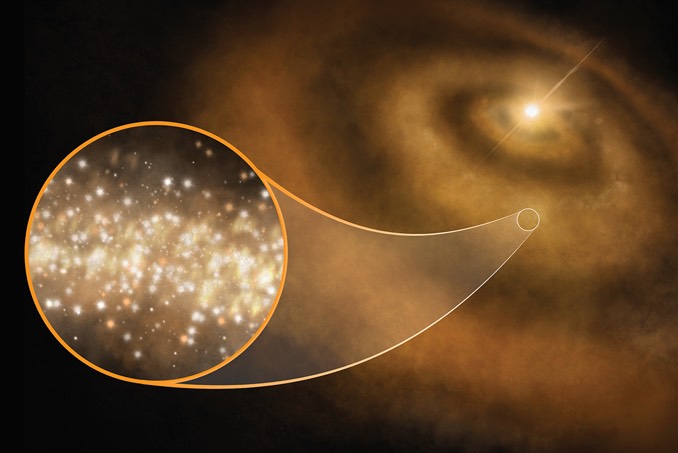
Vast clouds of diamond dust swirling around infant stars apparently are the sources of previously mysterious microwave emissions that defied easy explanation.
But before one starts pondering the value of any such cosmic real estate, astronomers caution the dust is not rare and its certainly not precious. The nanodiamonds in question are hundreds of thousands of times smaller than grains of sand
In a paper published this week in the journal Nature Astronomy, Jane Greaves, an astronomer at Cardiff University in Wales, said anomalous microwave emissions, or AMEs, were first detected 20 years ago. Based on the observed signature, researchers identified a possible source: organic molecules known as polycyclic aromatic hydrocarbons, which are found throughout interstellar space.
Greaves’ team used the Green Bank Telescope in West Virginia and the Australia Telescope Compact Array to study 14 young stars, identifying three unambiguous sources of AME light in protoplanetary disks – a first.
As it turns out, the infrared light from all three systems closely matched the telltale signature of nanodiamonds. Other protoplanetary disks exhibited infrared evidence of PAHs but no anomalous microwave emissions.
“In a Sherlock Holmes-like method of eliminating all other causes, we can confidently say the best candidate capable of producing this microwave glow is the presence of nanodiamonds around these newly formed stars,” Greaves said.
Nanodiamonds are thought o form in a superheated vapour of carbon atoms in high-energy star-forming regions. Their structure allows them to emit radiation when spinning and because they are so small, they spin fast enough to generate microwaves.
While evidence for the existence of such nanodiamonds has grown in recent years, the new observations are the first to make a direct connection between nanodiamonds and anomalous microwave emissions.
“This is a cool and unexpected resolution to the puzzle of anomalous microwave radiation,” Greaves said. “It’s even more interesting that it was obtained by looking at protoplanetary disks, shedding light on the chemical features of early solar systems, including our own.”



